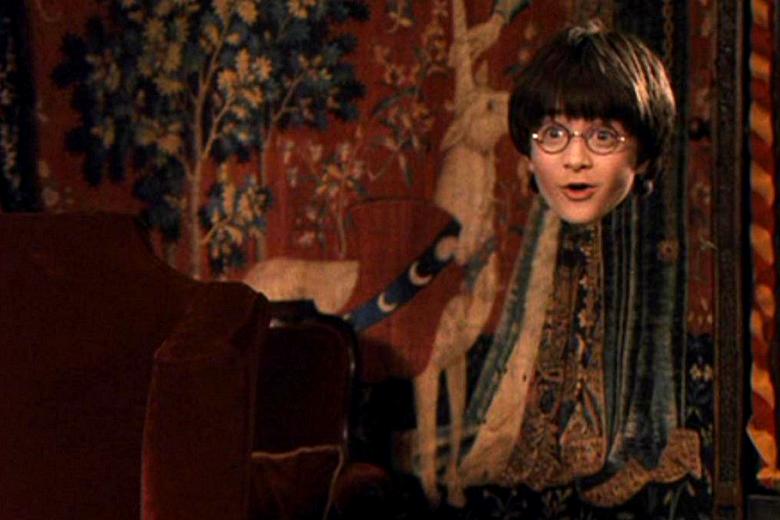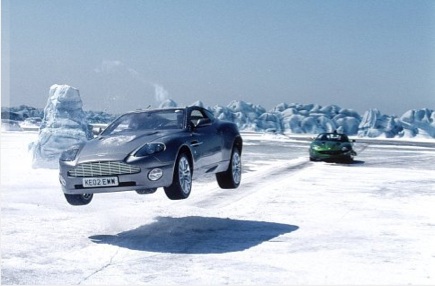Now You See It: 6 Tales of Invisibility in Pop Culture
... Now You Don't

Scientists and engineers are hard at work in their labs dreaming up and testing the next big step toward the ultimate invisibility cloak, one that would conceal even large objects in plain sight. The lab work is no doubt a nod to the sci-fi and fairy tales of pop culture. From Harry Potter's wizard-y cloak and Bilbo's magical ring to the veil in Grimm's "Twelve Dancing Princesses," here's a look at invisibility in pop culture.
Harry Potter

What's a wizard without the power of invisibility? In the Harry Potter series, the title character receives a fantastic Cloak of Invisibility from an anonymous benefactor. The Cloak initially seems to be a fun item, useful for sneaking about and getting into mischief; later, as the story gets darker, the Cloak's true origin is revealed, and its wearers use it more and more often in life-or-death scenarios.
The Harry Potter cloak gets its power of invisibility from magic, and has the unique ability to avoid damage from other wizards' spells. But it can't protect against magical sight, a fact that puts Harry and his friends in danger again and again.
The Twelve Dancing Princesses

In addition to getting one out of trouble, an invisibility device can bring riches … and royalty, at least for a soldier in Brother's Grimm "The Twelve Dancing Princesses." In the fairy tale, a king is puzzled by how his 12 beautiful daughters, who are locked in their room every night, manage to wear through their shoes by morning, as if dancing the night away. So the king announces he'll let whomever figures out the daughters' secret marry the princess of his choosing.
Fortuitously, a weary soldier is given an invisibility cloak by a stranger in the woods, which upon wearing he is able to follow the girls through a secret trap door and underground to a castle of princes. There, of course, they dance all night. Upon telling the king, the soldier and eldest daughter marry … and live happily ever after.
James Bond

Where would James Bond be without a car that goes dark? Well, apparently we don't need to find out, as the savvy super agent is outfitted with just that in the 2002 film "Die Another Day." His Aston Martin V12 Vanquish, equipped with the latest in gadgetry, including a passenger ejector seat and rockets behind the grille, can become invisible. Its "adaptive camouflage" cloaking system, allowed Pierce Brosnan to press a button and disappear his speedster, at least to the naked eye. Teensy cameras on the sides of the car capture the image facing that side of the car and then project that image effectively onto the other side, according to a James Bond fan site. The only problem? Its stealth could be interrupted by gunfire, which may not be an issue, if you weren't James Bond.
Greek Mythology

The ancient Greeks were early adopters of invisibility dreams. The god of the underworld, Hades, was said to own a Cap of Invisibility, which surrounded the user by a mist that made him or her undetectable. (Alternatively, Hades may not have owned the Cap, but his name may have been linked with it because the "hidden" quality of the hat mimicked the invisibility of the underworld.)
Get the world’s most fascinating discoveries delivered straight to your inbox.
The Cap shows up in multiple Greek myths. The goddess of wisdom, Athena, uses it during her meddling in the Trojan War, while the messenger god Hermes once used it to battle a giant. Perhaps the most famous myth involving the Cap of Invisibility is that of Perseus, the hero who slayed the Gorgon Medusa. In some versions of the tale, Perseus uses the Cap to get away after decapitating Medusa.
Wonder Woman

In modern-day comics incarnations, Wonder Woman is capable of flight. But it wasn't always so. To get around their superhero's limitations, early comics artists gave her an odd tool: An invisible airplane.
The plane first appeared in 1942. It could fly at more than 2,000 miles per hour (3,219 k/h) and responded to Wonder Woman's telepathic commands to show up as needed. At first, the plane was invisible, but its occupants weren't, making the whole conceit questionably useful. Later, the jet's origin story morphed into a tale involving alien technology, giving the plane cloaking powers for its occupants as well as the power of spaceflight.
Lord of the Rings

The ability to disappear can be more of a bane than a boon, as was the case in J.R.R. Tolkien's "Lord of the Rings." Introduced in "The Hobbit," the ring of power (or possibly the ring that makes one act crazy) is found by Bilbo Baggins in caverns where it had been lost by Gollum, who was driven mad by the evil artifact. Frodo inherits the magic ring from his uncle Bilbo and spends "Lord of the Rings" on a quest to destroy the malevolent ring.
Jeanna Bryner is managing editor of Scientific American. Previously she was editor in chief of Live Science and, prior to that, an editor at Scholastic's Science World magazine. Bryner has an English degree from Salisbury University, a master's degree in biogeochemistry and environmental sciences from the University of Maryland and a graduate science journalism degree from New York University. She has worked as a biologist in Florida, where she monitored wetlands and did field surveys for endangered species, including the gorgeous Florida Scrub Jay. She also received an ocean sciences journalism fellowship from the Woods Hole Oceanographic Institution. She is a firm believer that science is for everyone and that just about everything can be viewed through the lens of science.


